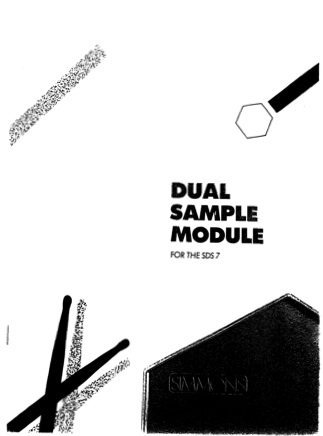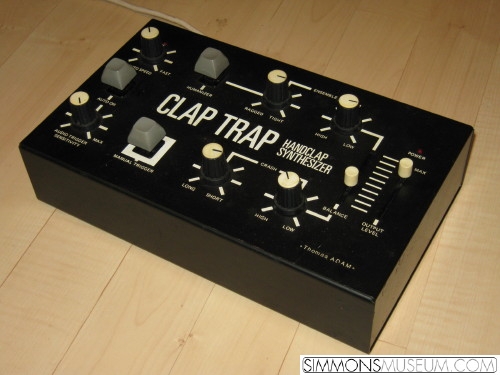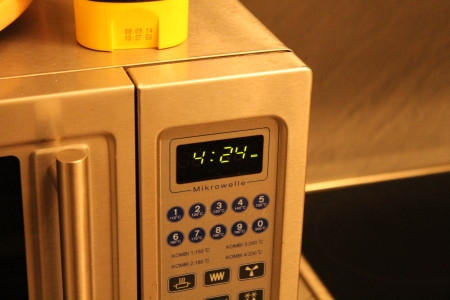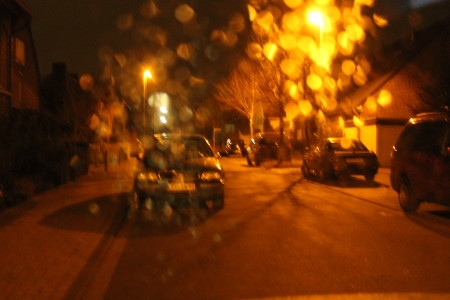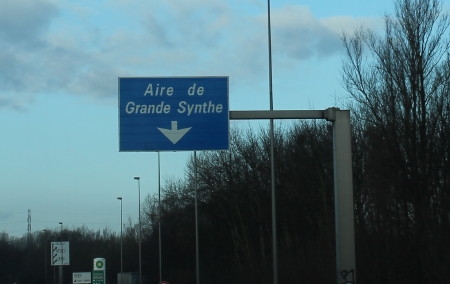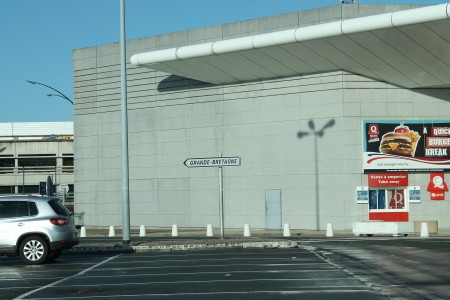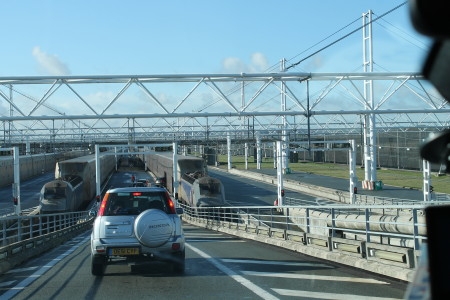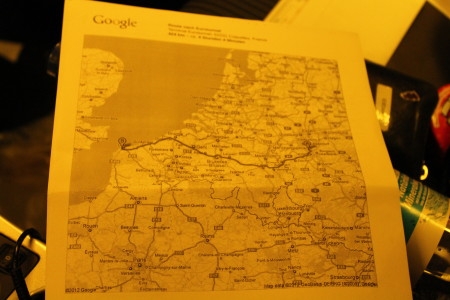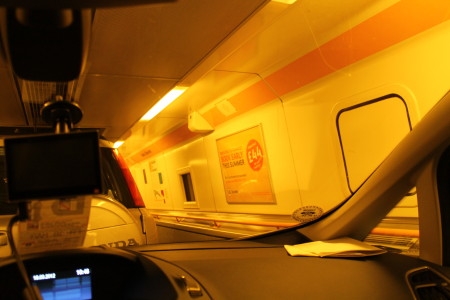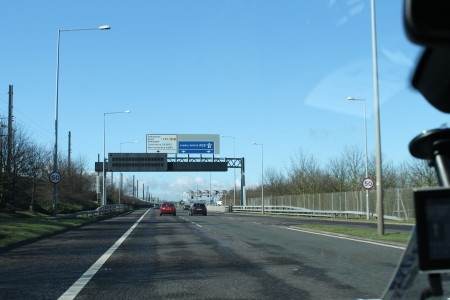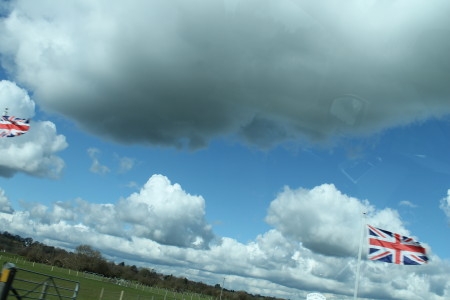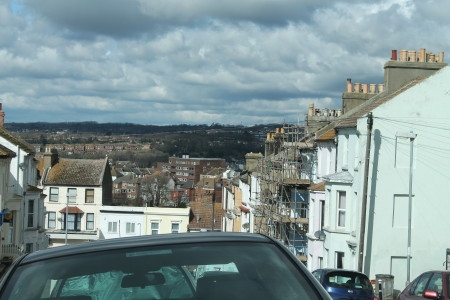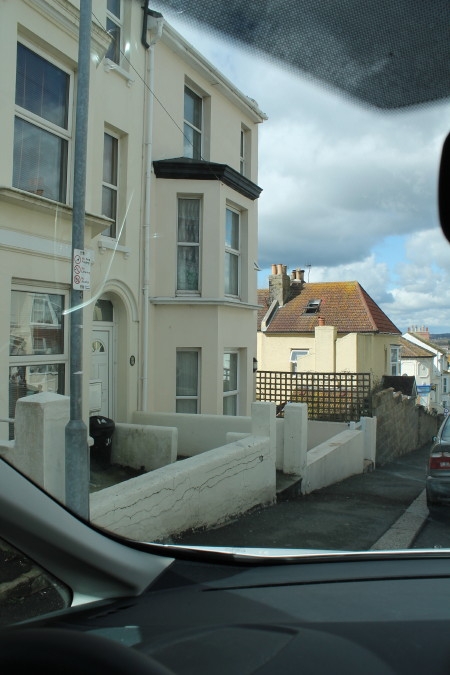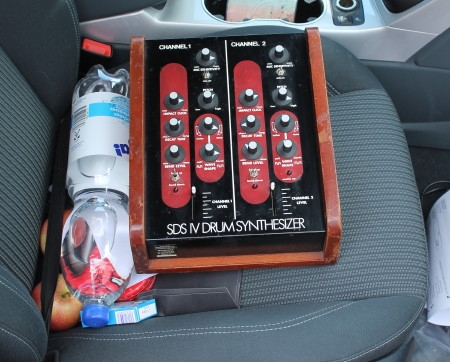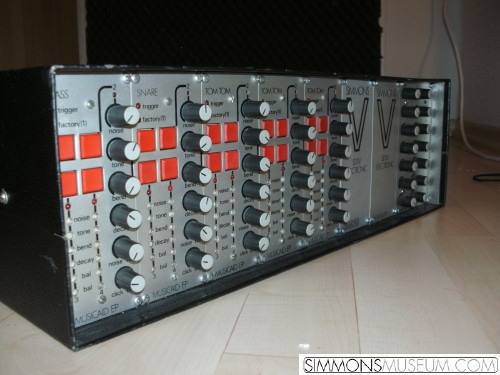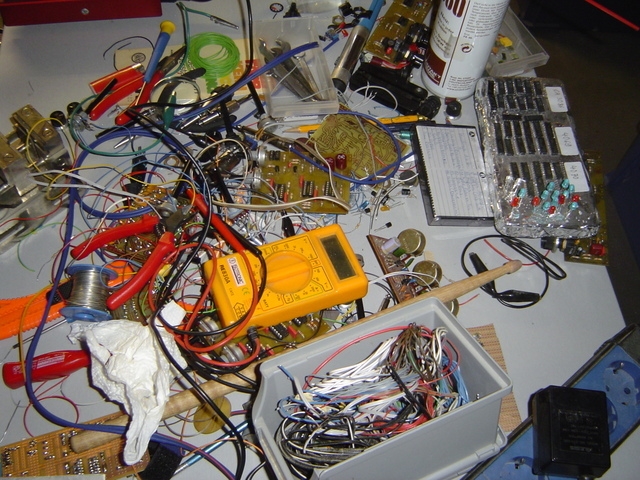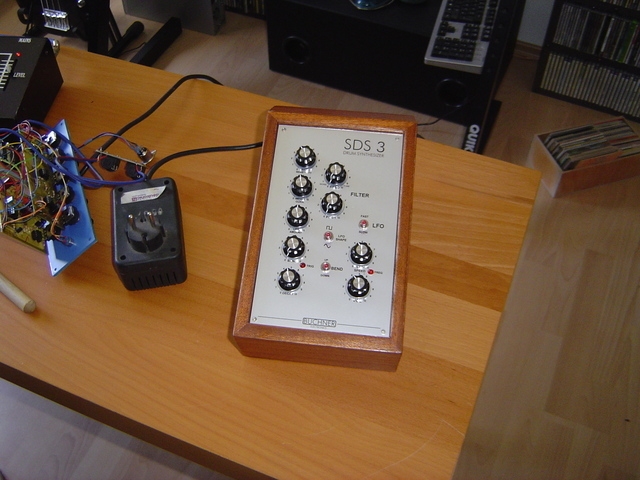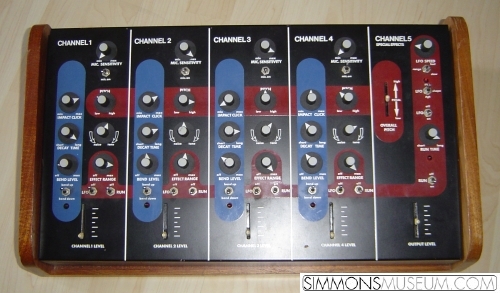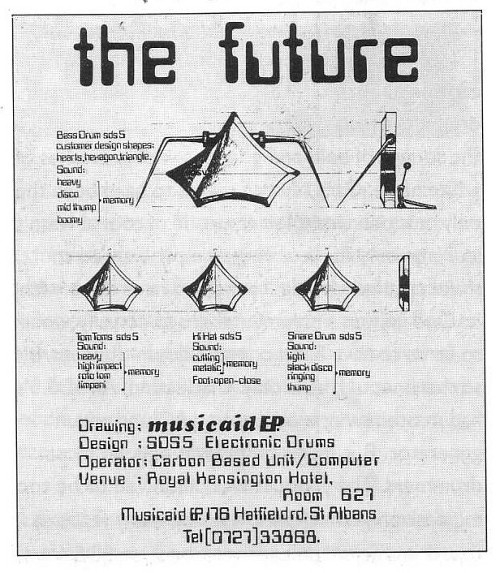No doubt. In my oppinion the SDSV is the best sounding analog drum synthesizer. Still… But I don’t really trust in 30 year old gear, at least in a live situation where you only have one chance. I decided to try something more contemporary. Something with a minimum of complexness. Easy to program, good sounding and particularly featuring the nice Simmons filters. I decided to give this chance to a Nord Drum 2. While the Nord Drum 1 was limited to 4 channels and only a single mono output, the second version already has 6 channels and stereo out. I liked the idea of programming sounds fast and simple in a very small and transportation friendly metal chassis. The Nord Drum 2 is not really analog, but it is not sample based as well. The analog filters are digitally cloned and -as we know from former Nord synths- pretty good sounding. Although the device is quite easy to program, it takes some time to achieve a Simmons-like sound you can work with.

For that particular live situation we used the stereo out to split the kick drum from the snare/toms which worked absolutely great. For future gigs I would like to program different kits for any track.
But is the Nord Drum 2 a substitude for an SDSV?
Yes and no. The ND2 sound is not as powerfull as the SDSV. But still it sounds great. ND2 has some big advantages:
- light and compact
- many more filters and waveforms than the SDSV
- MIDI In/Out
- Backups via SysEx
- easy to program
- reasonable price
- works great with Simmons pads, even with SDSV pads
- separate headphone output
The advantages of the original should be mentioned as well:
- the best Simmons sound ever. There is nothing like the original. Amen.
- one knob each filter: The sound can be edited while you are playing: No menus, no detour
- mono, stereo and single (XLR!) outputs
- up to 7 modules per frame
- 19″

Final result:
If you can live with a sound that is only 95% of the original, that only provides stereo out and that is only available as a non-standardised desktop version, the Nord Drum 2 is a good choice. It is powerful, reliable and compact. It sounds very good, has even many more filters compared to the analog Simmons filters and works with most Simmons pads (exception: SDX pads) and has contemporary features like MIDI. If you still prefer the original: Think about a Nord Drum as a backup 😉
Some more impressions from that gig can be found here: http://portfolio.tombstone-webzine.de/albums/held-der-arbeit-23-dezember-2016-matrix-bochum/








